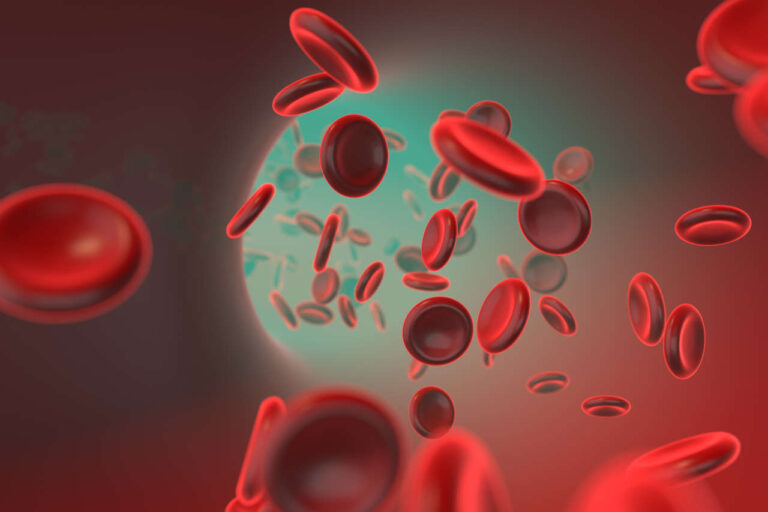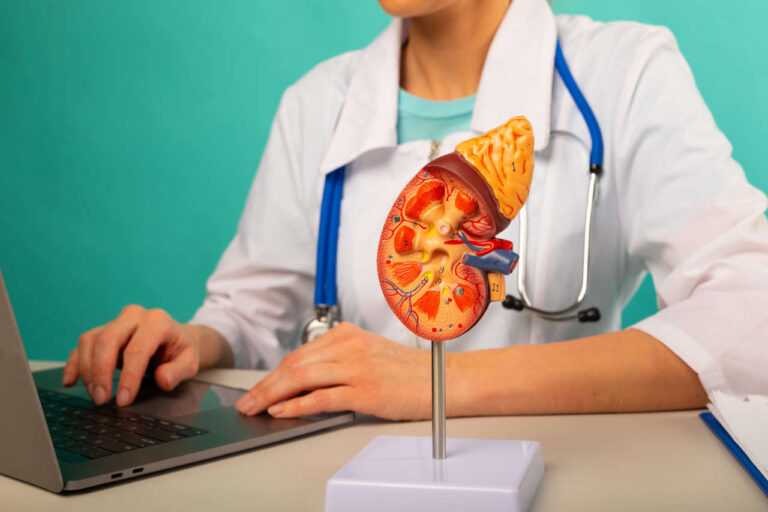
IVIG (intravenous immunoglobulin) is the mainstay of treatment for post-transfusion purpura. It helps increase platelet count and stop bleeding. Learn about its mechanism of action, doses, and effectiveness.
Get Financial Assistance
Highlights
- Post-transfusion purpura (PTP) is a rare but potentially lethal transfusion reaction.
- PTP is usually self-limiting and resolves within 14 days.
- Major bleeding occurs in about 33% of patients.
- High-dose IVIG is the primary treatment with high response rates.
A Quick Overview of Post-Transfusion Purpura
Post-transfusion purpura (PTP) is a rare yet potentially fatal transfusion reaction. Researchers have yet to determine the exact incidence of this condition. However, studies estimate there’s about 1 new case of PTP per 24,000 to 100,000 transfusions [1].
The characteristic feature of PTP is a sudden, drastic drop in platelet count, which usually occurs within 14 days of blood or platelet transfusion. A low platelet count after a transfusion is typically self-limiting, often resolving within 2 weeks.
However, in severe cases, death may occur due to bleeding inside the skull or brain. Approximately 1 in 3 patients has major bleeding.

Symptoms can include:
- Post-transfusion fever
- Unusual purpuric rashes (red or purple spots beneath the skin)
- Bruising
- Nosebleeds
- Gum bleeding
- Bleeding in the digestive and urinary tracts
What Causes Post-Transfusion Purpura?
PTP can occur when the antibodies (proteins) directed against transfused platelets attack and destroy the receiver’s platelets. But why this happens is unclear.
The following factors may increase the risk of PTP [2,3]:
- Being female: The female-to-male ratio for PTP is 5:1.
- Having a history of pregnancy or blood transfusion.
- Being elderly, with a history of irregular heart rhythms, bleeding disorders, blood or bone marrow cancer, and organ transplants.
- Having a higher volume of transfused blood.
- Having anemia (low number of red blood cells) due to sudden blood loss, such as from a trauma.
Post-Transfusion Treatment
IVIG is the primary treatment for post-transfusion purpura. Plasma exchange (plasmapheresis) and corticosteroids may be considered in individuals who don’t respond to IVIG. Steroids may also be used with IVIG.
Most experts don’t recommend platelet transfusions, as these can make the symptoms worse.
Further Reading: IVIG vs. Plasmapheresis
Speak to a Specialist
About Copay AssistanceIVIG for Post-Transfusion Purpura: What Do Recent Studies Suggest?
Most knowledge about IVIG for post-transfusion purpura comes from case reports and small studies. Nevertheless, IVIG is often considered the treatment of choice for PTP.
IVIG is highly effective, with a reported response rate of 90% and a favorable response within 48 hours after starting IVIG therapy.
Many studies and case reports have found that high-dose IVIG is effective in:
- Rapidly increasing platelet counts
- Stopping bleeding
For example, according to a 2025 case report published in the Canadian Medical Association Journal, researchers successfully treated a 36-year-old woman suspected of having PTP with IVIG and a steroid.
The patient received 1 g/kg/day of IVIG for 4 days, from days 10 to 13. She also received 40 mg/day of dexamethasone from days 11 to 14. Her platelet count increased around 72 hours after starting IVIG therapy [4].
IVIG is the mainstay of treatment for PTP, according to the authors of a 2019 review. In this review, there were two dosage regimens [5]:
- 400 mg to 500 mg/kg/day of IVIG for 1 to 10 days.
- 1 to 2 g/kg/day of IVIG for 2 to 5 days.
According to a 2024 case report published in the American Journal of Case Reports, a 69-year-old man with PTP was successfully treated with an IVIG dose of 1 g/kg per day for 2 days and a steroid (dexamethasone) dose of 40 mg/day for 4 days [6].
IVIG for Post-Transfusion Purpura: How Does IVIG Therapy Help?
The exact mechanism by which IVIG increases platelet count in post-transfusion purpura is unclear.
Available theories are based on the role of IVIG in immune thrombocytopenic purpura. Health experts believe IVIG may help restore platelet count by:
- Blocking the removal of antibody-coated platelets.
- Neutralizing antibodies that attack the receiver’s platelets.
- Preventing immune cells from destroying the receiver’s platelets.
- Accelerating antibody breakdown.
IVIG for Post-Transfusion Purpura: Frequently Asked Questions
1. How is post-transfusion purpura treated?
High-dose IVIG is the first-line treatment for post-transfusion purpura. If symptoms don’t improve, your provider may recommend plasma exchange or corticosteroids. Platelet transfusions are rarely used and should be reserved for patients with severe bleeding.
2. How does IVIG help with thrombocytopenia?
The exact mechanism isn’t fully understood. It is believed that IVIG helps restore platelet count by preventing the body from removing antibody-coated platelets and neutralizing antibodies.
3. How quickly does IVIG increase platelets?
IVIG increases platelet count typically within 48 to 72 hours after starting treatment. The time it takes to increase platelet count depends on the patient’s platelet levels at the time of starting IVIG, the severity of the condition, and the doses of IVIG administered.
REFERENCES:
- Owczarzak, Laura, et al. “Uncommon Presentation of Post-Transfusion Purpura in an Elderly Male: A Case Report and Unique Alloantibody Identification.” American Journal of Case Reports, vol. 25, June 2024, doi:10.12659/ajcr.942949.
- Desai, Nosha Farhadfar Amishi, et al. “Diagnosis and Management of Post Transfusion Purpura: A Case Report.” Journal of Clinical Case Reports, vol. 05, no. 06, Jan. 2015, doi:10.4172/2165-7920.1000550.
- Menis, Mikhail, et al. “Posttransfusion Purpura Occurrence and Potential Risk Factors Among the Inpatient US Elderly, as Recorded in Large Medicare Databases During 2011 Through 2012.” Transfusion, vol. 55, no. 2, July 2014, pp. 284–95, doi:10.1111/trf.12782.
- Hirunwidchayarat, Panumase, et al. “Post-transfusion Purpura in a 36-year-old Woman.” Canadian Medical Association Journal, vol. 197, no. 23, June 2025, pp. E640–44, doi:10.1503/cmaj.250206.
- Hawkins, Jaleah et al. “Post-Transfusion Purpura: Current Perspectives.” Journal of blood medicine vol. 10 405-415. 9 Dec. 2019, doi:10.2147/JBM.S189176
- “Uncommon Presentation of Post-Transfusion Purpura in an Elderly Male: A Case Report and Unique Alloantibody Identification.” American Journal of Case Reports, vol. 25, June 2024, doi:10.12659/ajcr.942949.












